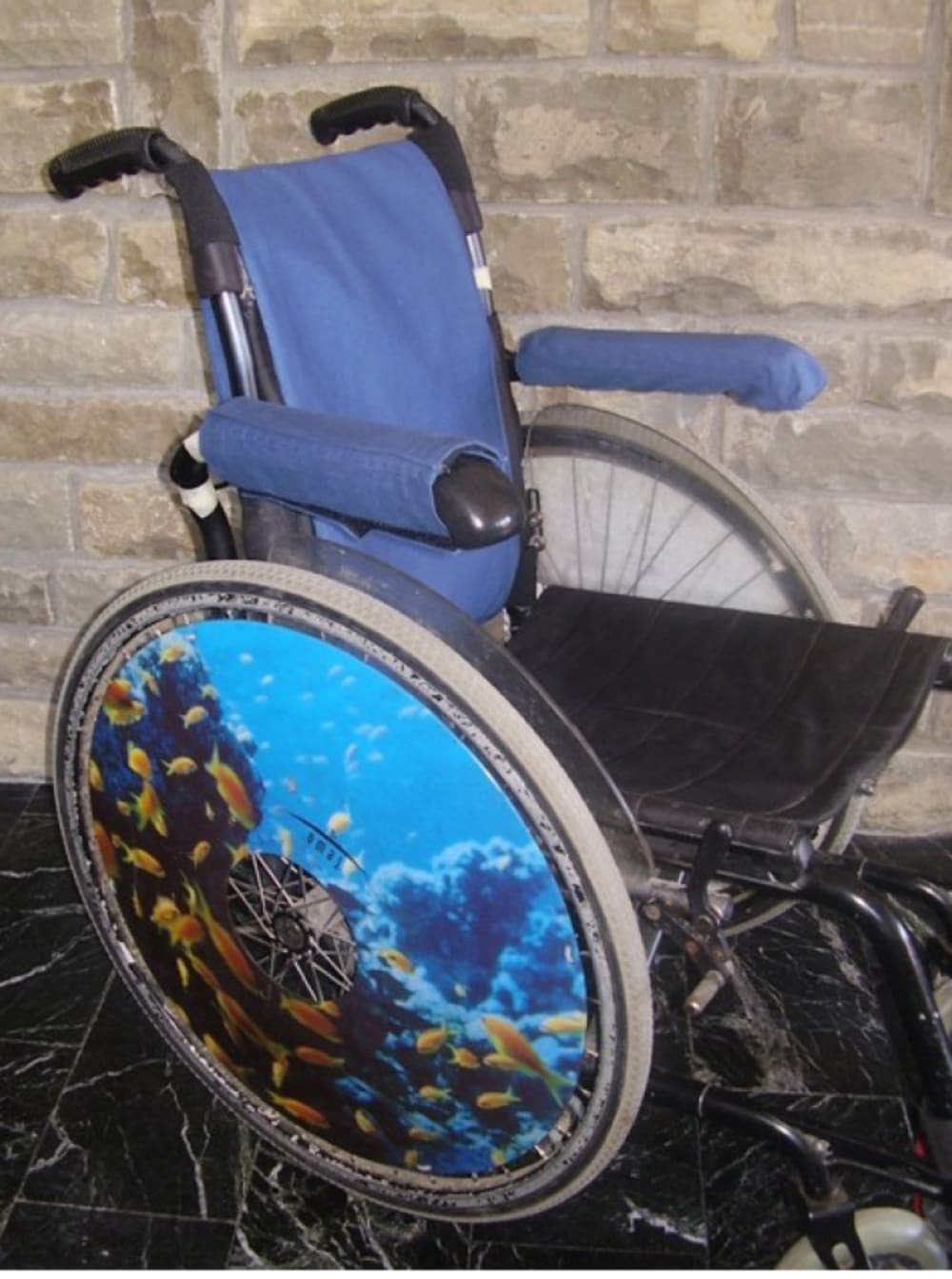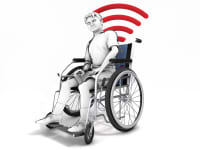Today's need to improve quality of life of people with disabilities requires flexible, personal and innovative solutions. The latest ongoing studies demonstrate that technology, if used in a correct scenario of services, can offer the right aids that help in restoring physical limitations, impairments or in maintaining residual physical capacities.
Odith is a technical aid for people affected by Cerebral Palsy, that often adopt incorrect postures, thus worsening their physical problems.
Odith is made of two separate removable elements, backrest and armrest textile covers, and it is designed to be used on a wheelchair - although it can be adapted to fit any other types of chair or armchair. Integrated in both backrest and armrest covers are textile sensors that react to pressure. While the backrest cover detects a wrong trunk posture, the armrest cover has the important function of detecting if the arms are correctly positioned on the armrests. The consequence of an incorrect posture of the arms could let them fall down with the danger of the arms been entangled in the side wheels. This could go unnoticed by a care-giver pushing the wheelchair.
A control system and an alarm are placed on the backside of the wheelchair backrest, in a protected position. The battery is also placed in a fabric pocket attached in the lower part of the wheelchair.
Textile pressure sensors are embedded in the backrest and armrest covers by sewing them to the inside lining. These sensors are connected by thin electric wires to a small interface board, that is attached at the back of the chair. The board sends the corrected signals to the microcontroller that monitors when one or more sensors are released. When not pressed, textile sensors send a message to the microcontroller that sets the alarm off, after a programmable time delay.
All external surfaces of the covers have been made with waterproof and anti-stain fabrics of the last generation, that limit liquid absorption and facilitate cleaning and maintenance. This type of covering has the advantage of protecting electronic components and guaranteeing good comfort and transpiration.
From our preliminary tests emerged that is it possible to monitor the posture of a person affected by disability using textile flexible sensors embedded in a textile cover of a wheelchair. It is possible to monitor the trunk posture by placing sensors on the backrest of the wheelchair and it is possible to monitor the position of upper limbs by placing sensors on the wheelchair armrests.
This system has been tested on a person affected by Cerebral Palsy, but the same system can be used to monitor the posture of any person sitting on a wheelchair.
Future developments will allow the full integration of this monitoring system to the wheelchair and an app for smartphones able to send the alarm to a caregiver in another room.
Like this entry?
-
About the Entrant
- Name:Daniela Gargiulo
- Type of entry:teamTeam members:Inntex Srl
- Patent status:none








